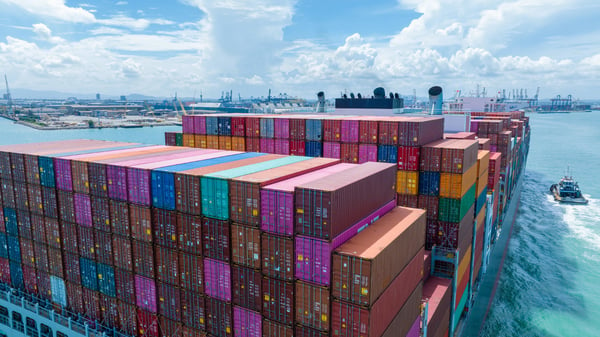Compliance is becoming increasingly complex. The playing field has changed and the pace of change is accelerated by new technologies, the changing world situation, and increased regulatory and compliance requirements. And it's happening fast. Here, David Wahlbeck, CPO at Stratsys, outlines some of the key trends shaping the compliance landscape in 2025 and provides insights into how companies can effectively navigate these changes.
In recent years, the compliance sector has faced significant challenges from both increased regulatory scrutiny and geopolitical tensions. As KPMG's Ten Key Regulatory Challenges notes, compliance this year faces regulatory intensity via numerous regulatory issuances and increased complexity of regulatory oversight.
In addition, finding the right skills and talent has become more challenging, and many compliance departments have been forced to reduce the proportion of full-time staff. Faced with these challenges, compliance officers must adapt to ensure the continued effectiveness of their departments. Here are some ways to respond to the challenges.
"By investing in the right risk management system, both the compliance processes themselves and the company's work overall can be streamlined."
Keep up with technological innovations
As in many other industries, technological innovation is driving much of the change in compliance. Artificial intelligence (AI) and machine learning are increasingly being integrated into compliance systems to automate data analysis, risk assessments and reporting processes. Investing in the right risk management system can streamline both the compliance processes themselves and the company's work overall. The system helps to identify, assess and mitigate risks, as well as enabling proactive risk mitigation that strengthens the overall regulatory framework. The more repetitive tasks of employees can often be automated, allowing them to focus on more strategic tasks instead.
However, new systems support challenges related to data protection and privacy issues, which require keeping abreast of technological advances and upcoming regulations.
.png?width=572&height=381&name=David%20(1).png)
David Wahlbeck, CPO Stratsys
Meet the increasing amount of regulatory requirements
Globalization continues to impact the compliance landscape through a range of international regulations and standards. The increased complexity of the compliance sector in recent years means that employees must navigate through more complicated rules and regulations and be constantly updated with their changing nature.
By 2025, we expect to see an increase in multilateral agreements and standards with regulations that extend across borders.
In 2025, we expect to see an increase in multilateral agreements and standards with cross-border regulatory frameworks in areas such as data protection, cybersecurity and sustainability reporting. In the area of sustainability, for example, current EU laws and regulations CSRD and ESRS are applicable across the EU. In terms of information security, current directives and regulations include DORA and NIS2. Businesses must therefore utilize flexible system support that can adapt to these changing international requirements.
Increased transparency and ESG reporting
The requirements for ESG reporting are also expected to become more stringent and include greater transparency around the organization's sustainability efforts. Responding to these demands requires detailed reporting systems that can ensure companies' ESG data is reliable and comparable over time. This includes using standardized ESG indicators and frameworks such as GRI or TCFD.A vulnerable labor market
Parallel to these external pressures, the compliance field is also characterized by a competitive labor market. Niche compliance skills are in high demand, and the fierce competition for talent makes it challenging for managers not only to expand their departments but also to retain their workforce.
"Review and further develop your strategy to attract, retain and develop skilled talent. This may include offering attractive career development opportunities and a positive workplace culture. Teleworking opportunities and flexible schedules can also be a competitive advantage."
Summary: Responding to the changing compliance landscape
Compliance is characterized by rapid change and new challenges, and to be successful, it is important to prioritize the preparatory work for upcoming legal requirements and other regulations. Some concrete tips for successful continued work:
- Invest in new technologies and innovation and apply skills development with continuous training for staff
- Establish strong internal communication channels for compliance-related information
- Create cross-functional teams that can work together to identify and manage compliance risks
- Build strong relationships with regulators and other stakeholders to understand expectations and requirements
- Review whether the required skills are available internally in the organization, attract otherwise interesting talent through flexible working arrangements and strategic talent management
In Stratsys platform you avoid working in silos and can in a coherent and structured way spread knowledge from the specialists to the rest of the organization. You get a holistic view of the organization's business-critical processes. Our compliance platform brings together business management, GRC, sustainability, and systematic quality and work environment management in one place. It becomes easier to get an overview and allocate responsibilities. With a higher degree of automation and systematics, work becomes efficient throughout the organization.



